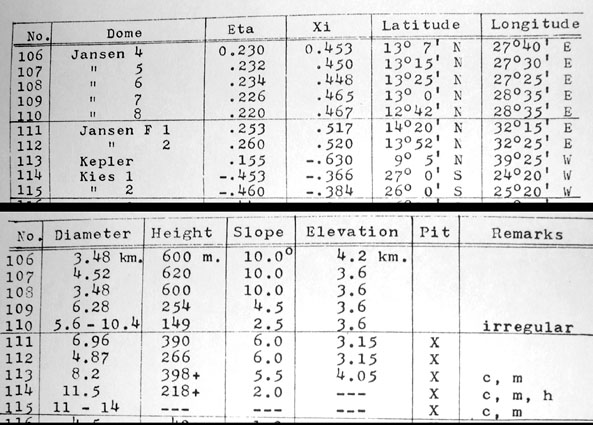Difference between revisions of "August 26, 2004"
| Line 11: | Line 11: | ||
<table width="80%" border="0" align="center" cellpadding="8"> | <table width="80%" border="0" align="center" cellpadding="8"> | ||
<tr> | <tr> | ||
| − | <td><div align="center" class="main_sm" | + | <td><div align="center" class="main_sm">Image Credit: [http://cfa-www.harvard.edu/library/ David Brungart/Wolbach Library ]</div></td> |
</tr> | </tr> | ||
</table> | </table> | ||
Revision as of 20:32, 19 January 2015
A Lost 40 Year Old Dome Catalog
Image Credit: David Brungart/Wolbach Library |
|
A Lost 40 Year Old Dome Catalog While visiting the Wolbach Library of the Harvard-Smithsonian Center for Astrophysics in Boston just before the Venus transit I discovered a comprehensive study of domes written in 1964. It is a master of science thesis by David L. Brungart, a student at the Air Force Institute of Technology at Wright-Patterson Air Force Base in Ohio. Using the Kuiper Photographic Lunar Atlas and the LAC charts available at that time, Brungart compiled a catalog of 261 domes. For each he gave the name, coordinates, diameter, height, slope, elevation and morphological characteristics. In addition, each dome or cluster of domes was described in a text paragraph accompanied by a PLA photo or a sketch. Brungart estimated heights for an amazing 142 domes using Gilbert Fielder's method. Brungart understood that his results were only order of magnitude estimates, but their range from 40 m to 2,650 m, and median of about 300 m seem reasonable. It is a shame that this extensive catalog was not published - as far as I know - for it may have stimulated a quantitative approach to dome studies. I plan to post the entire catalog on a new web site that will appear soon... Related Links: Tomorrow's LPOD: Serenitatis in Black and White and Gray |
Author & Editor: Technical Consultant: A service of: |
COMMENTS?
Register, and click on the Discussion tab at the top of the page.




